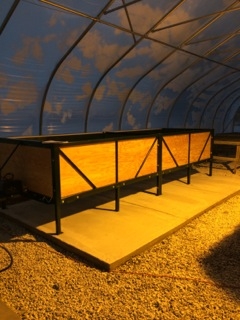Matt Turino at the Sustainable Student Farm provided this overview of the food waste handling / transportation related to the Vermicompost project.
You are here
Vermicompost (In Progress)
Project History
-
2/21/2018
-
6/30/2015
The SSC awarded the Sustainable Student Farm a grant in 2013 to build a transplant g
Project Family
Associated Collections
Description
Funding Sources
| Funding Source | Total Amount Approved | Total Amount Spent |
|---|---|---|
| $0.00 | $0.00 | |
| Totals | $0.00 | $0.00 |
Project Team
-
Project Leader:
Zachary GrantTeam Members:
- Yiyun Jin
Themes
-
Primary Theme:
Project Location(s)
This map is interactive! Click (or touch) and drag to pan; scroll (or pinch) to zoom.

